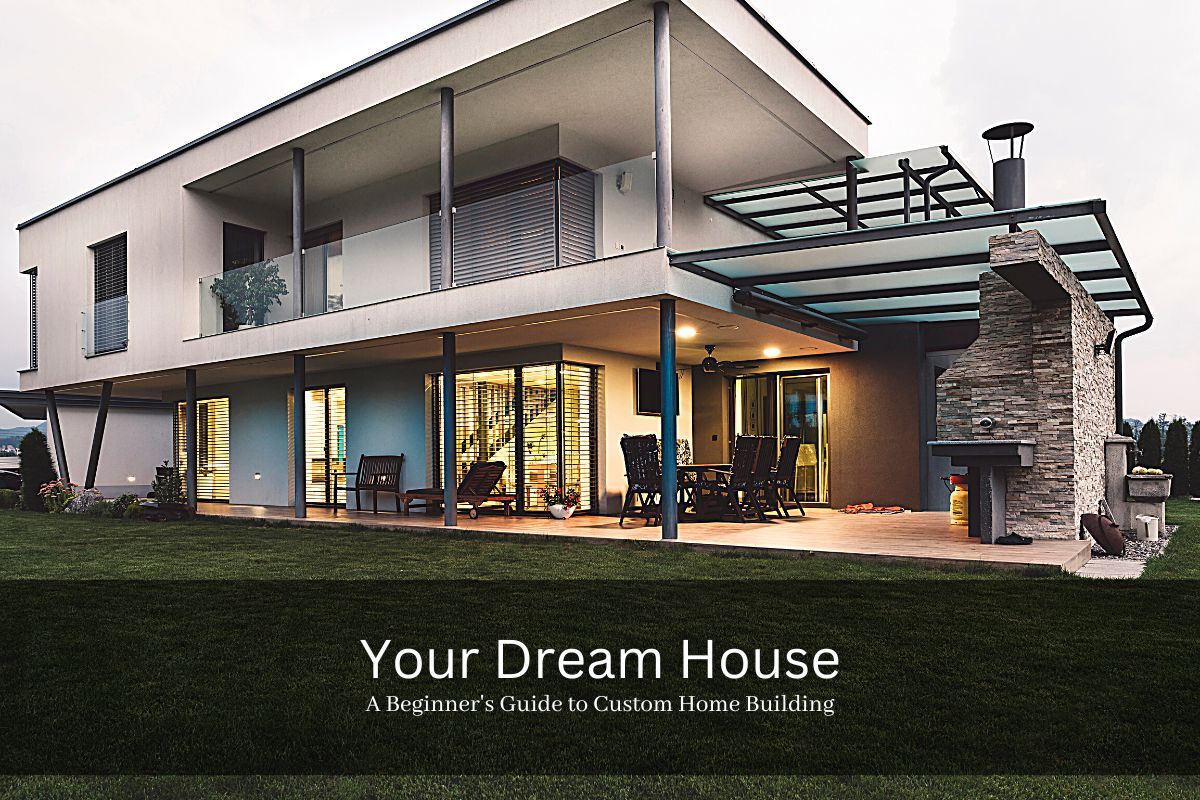How to Plan Your Dream House: A Beginner's Guide to Custom Home Building
Embark on an exciting journey of building your dream home. This guide demystifies the process, offering confidence and excitement as you create a space uniquely tailored to your tastes and lifestyle.

Building a house is an exciting journey. It's a chance to create a space that's perfectly tailored to your tastes and lifestyle. It's an opportunity to design a home that's uniquely yours, a place where you can create lasting memories. However, it can also be a daunting task, especially if you're new to the process. This guide aims to demystify the process of planning and building a custom home, helping you navigate the journey with confidence and excitement.
The path to your dream home begins with a vision. It's about more than just four walls and a roof; it's about creating a space that aligns with your lifestyle, aspirations, and aesthetic sensibilities. From the overall architectural style to the smallest interior details, every aspect of your home should reflect who you are and how you live. So, how can you transform this vision into reality? Let's explore.
1. The Role of Custom Home Builders
Choosing the right custom home builders is a critical step in your home-building journey. These professionals are the ones who will translate your dream into a tangible, physical reality. They are responsible for managing the entire construction process, from initial design and planning to the final finishing touches.

A good builder will work closely with you to understand your vision, requirements, and budget. They will guide you through the myriad of decisions you'll need to make and ensure that the project stays on schedule and within budget.
When selecting custom home builders, consider their experience, reputation, and past projects. Take the time to meet with them personally to gauge their communication style and professionalism. Remember, this is a partnership, and you need a team that respects your vision and works diligently to realize it. Additionally, visiting their display homes can provide valuable insights into their craftsmanship and design capabilities, helping you make an informed decision when choosing the right custom home builder for your project.
2. Planning and Designing Custom Homes
The planning and design stage is where your custom homes start to take shape. This is where you decide on the layout, number of rooms, architectural style, and interior design elements.

Begin by outlining your lifestyle needs and preferences. For instance, if you love to cook, you might prioritise a spacious, well-equipped kitchen. If you work from home, a quiet, well-lit home office could be essential.
Next, think about your aesthetic preferences. Do you prefer a modern, minimalist style, or are you more inclined towards a traditional or rustic look? Your chosen style will inform the architectural design of your house, as well as interior elements like color schemes, flooring, and fixtures.
Remember, planning and designing custom homes isn't just about aesthetics. It's also about functionality. Consider elements like storage, lighting, and energy efficiency, and ensure your home is designed to evolve with your changing needs over time.
3. Choosing a Location
Location is a crucial aspect of building your dream home. It affects your daily life and can significantly impact the value of your home. When choosing a location, consider factors such as proximity to work, schools, and amenities, the neighborhood's safety, and the potential for future growth in the area.
The physical characteristics of the site are also important. Is it flat or hilly? What's the soil condition? These factors can influence construction costs and the design of your home.
4. Financing Your Project
Building a custom home requires a significant financial investment. Therefore, establishing a budget early in the process is crucial. This budget will guide your decisions throughout the project, from the size and design of your house to the materials you choose.
Most custom home projects are financed through construction loans. These are short-term loans that cover the cost of land and construction. It's important to shop around and explore different financing options to find one that fits your financial situation.
5. Understanding the Construction Process
Being familiar with the construction process of your custom home is key to managing your expectations and making timely decisions. The process typically begins with site preparation, which may involve land clearing, excavation, and laying the foundation.
Then comes the construction of the house's frame, which gives shape to your home. This is followed by the installation of windows and doors, roofing, and exterior finishing. Next, your builder will work on the home's interior, installing electrical and plumbing systems, insulating and putting up drywall, and finally installing fixtures, flooring, and appliances. Also, during the interior finishing phase, don't forget to integrate state-of-the-art pool cover systems that ensure convenience and security for your aquatic haven.
Having a clear understanding of these stages will help you anticipate what's coming next and prepare for decisions that need to be made along the way.
6. Being Prepared for Challenges
Like any significant project, building a custom home can come with unexpected challenges. This could include construction delays due to weather, unforeseen site conditions, or changes in material availability or pricing.
Having a contingency plan is important. This means setting aside extra funds in your budget to cover unforeseen costs and being flexible with your timeline. It's also crucial to maintain open and regular communication with your builder to stay informed about the project's progress and any potential issues.
7. The Importance of Quality Fixtures and Finishes
The fixtures and finishes you choose for your home, from flooring and cabinetry to faucets and doorknobs, can significantly impact its look and feel. They can also affect the home's durability and functionality.
When selecting these elements, balance aesthetics, quality, and budget. High-quality fixtures and finishes will enhance your home's appeal, provide longevity, and potentially increase your home's value. They're an investment in the overall quality and comfort of your home.
8. Incorporating Personal Touches
While functional design and quality construction are essential, it's the personal touches that truly make a house a home. This could be anything from a cozy reading nook in your living room to a kitchen backsplash featuring tiles you picked up on your travels.
These personal touches help create a home that's uniquely yours and filled with character. Don't be afraid to infuse your space with elements that tell your story and make your heart sing every time you walk through the door.
In conclusion, building your dream home is a significant project, but with careful planning and the right team, it can be a rewarding and enjoyable experience. With these insights, you're now better equipped to embark on this exciting journey. Good luck, and may your new home bring you much joy and happiness.




Comments ()